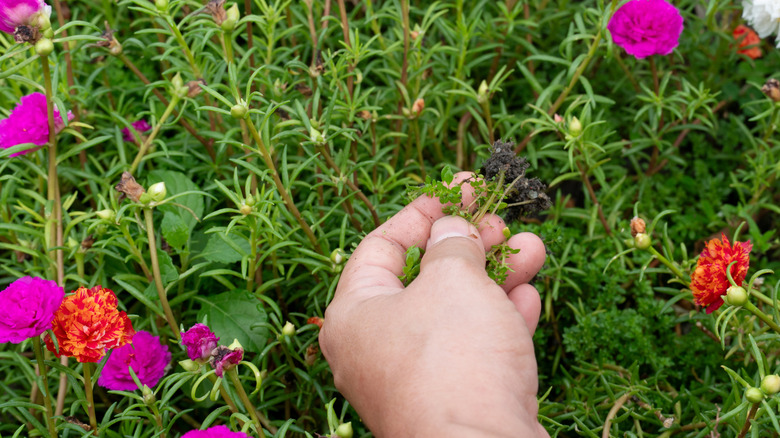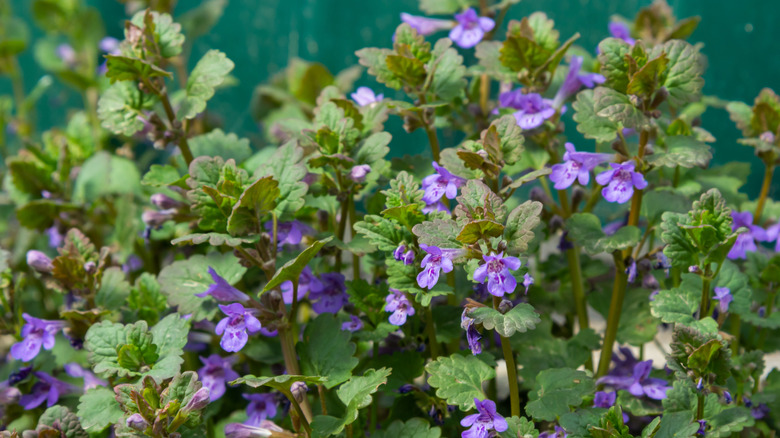The Beautiful Flowering Ground Cover That's Considered An Invasive Species
Ground covers provide a range of important functions in a garden. Not only do they prevent weed growth and limit erosion, but they also add beauty and can complement larger plants growing nearby. Unfortunately, not all ground covers are appropriate for North American gardens. Despite its small purple flowers and attractive leaves, creeping Charlie (Glechoma hederacea) is one flowering ground cover to avoid due to its invasiveness. Also known as ground ivy or gill-on-the-ground, this plant is one you might not want in your yard at all.
A quick look at creeping Charlie, and it's easy to understand why it was initially loved as a ground cover when it was brought over from Europe. Unfortunately, the same rapid growth that makes the herbaceous perennial seem like a good option for a ground cover has also caused it to become an invasive and difficult-to-remove problem. Creeping Charlie doesn't just spread from its seeds — it also spreads thanks to its branching stolons and rhizomes, causing it to quickly take over gardens and lawns. Even worse, this undesirable weed can grow in a wide range of soil types, meaning that everything from clay-heavy soil to sandy soil can be invaded by it, though creeping Charlie grows best in moist and shady areas.
How to remove and replace invasive creeping Charlie
Because creeping Charlie can grow back from small sections of its roots or stems, it is a challenge to remove by hand. One popular strategy is to use Borax to kill creeping Charlie. Unfortunately, this method hasn't been shown to be very effective and can harm nearby plants. If you do opt to try using a chemical to control the weed, it's best to use a post-emergent herbicide containing triclopyr or sulfentrazone. Be sure to follow all instructions and avoid using it on windy days to prevent overspray, as you want to kill creeping Charlie without killing your lawn or other nearby plants. Growing healthy grass or other ground covers to outcompete this invasive plant is also an important part of controlling its spread.
While it may be initially disappointing to learn that creeping Charlie isn't a good option as a ground cover, there are plenty of low-growing plants that are perfect alternatives. One great option is planting wild violets (Viola sororia). These North American native plants are hardy in USDA hardiness zones 3 through 7 and rarely grow past about 10 inches tall. Like creeping Charlie, they grow well in damp and shady spots, and they even have similar looking cute purple flowers.
Another plant to consider using for ground cover is cranesbill geraniums (Geranium maculatum). Native to North America, these too boast purplish flowers, though red and white blooming cultivars are also available. They're perfect for part shade locations and are hardy in zones 3 through 11.

